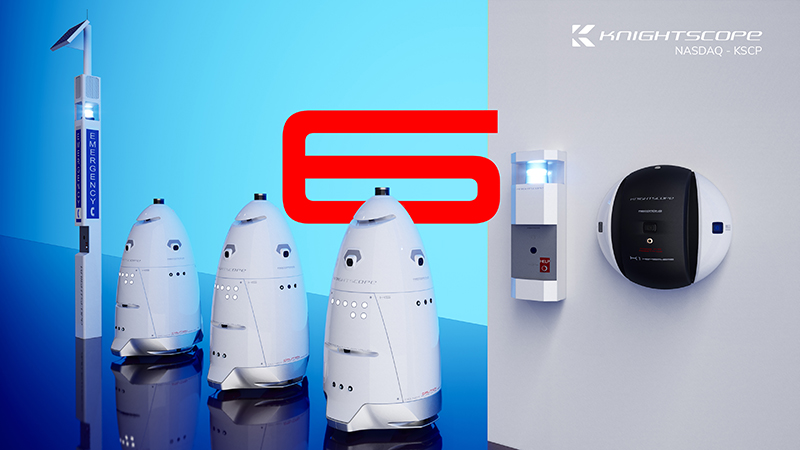
The future is here. Robots can help make the world safer. On December 22, 2022, a company announced six new contracts for four of its Autonomous Security Robots (ASR). Likewise, it also sold four Blue Light Emergency Communication systems. The company sold the systems in California, Texas, and Michigan. Altogether, the contracts and deployment locations are as follows:
- Texas – an American hotel group with five properties in the Dallas Fort-Worth area will have a K5 robot moving around and watching a hotel parking lot around the clock near Dallas Love Field.
- California – a K1 Hemisphere will be deployed at the front door of an entertainment facility in San Diego, while a K5 ASR will protect its parking lot.
- Michigan – a township has purchased a K1 Blue Light Emergency Phone, with plans to expand upon successful delivery and operation.
- Texas – a community college in San Antonio is adding one K1 Blue Light Tower to its existing system.
- California – a county government purchased two K1 Satellite Upgrade Kits for their highway emergency call boxes.
- California – another healthcare client is expanding, adding a third location and its third K5 robot to the security team.
Knightscope builds security robots that work on their own to deter, detect, and report crimes.
Improvements that AI may bring
Here are a few ways AI could potentially improve autonomous security robots:
- Better object, face, and behavior recognition - AI and computer vision algorithms can enable security robots to more accurately identify people, objects, behaviors, etc. in their environment. This allows the robots to detect threats or anomalies more reliably.
- Learning and adaptation - With machine learning, security robots can improve their behavior and responses over time as they gather more data from their sensors and interactions. They can learn to better distinguish dangerous versus benign activity.
- Natural language processing - AI can enable security robots to better understand natural speech commands and have natural conversations. This allows for more intuitive human-robot interaction.
- Improved navigation and mapping - Advanced algorithms can help security robots build rich 3D maps of their environment and navigate more dynamically around people and unpredictable obstacles.
- Coordination between multiple robots - AI allows teams of security robots to coordinate their actions and share what they've learned. This collaborative approach can make them more adaptable.
- Risk analysis - Security robots could use AI to assess environments or situations and determine the appropriate response based on an analysis of various risk factors. This enables smarter decisions.